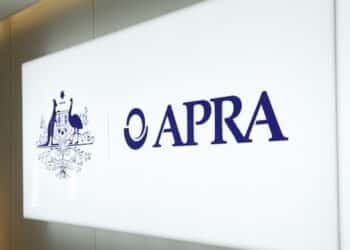While larger employers in Australia have historically seen corporate funds as a way to customise their value proposition to employees, a shifting superannuation landscape suggests a grim outlook for such funds moving forward.
Last week, one of the country’s largest corporate funds, TelstraSuper, joined the chorus of corporate super funds open to mergers, with the TelstraSuper board determining members would be “best served” in the long term by seeking a merger partner.
“Originally established exclusively for Telstra employees but now serving a much broader membership, less than one quarter of TelstraSuper members currently work for the Telstra group of companies. As well, today many new members come directly to the fund or through other unrelated employers and not through Telstra’s employment,” the $26 billion fund said.
“The TelstraSuper Board and Telstra Group came to the view that the time has come for TelstraSuper to move forward with a new separate identity from the Telstra Group.”
Qantas Super, too, has flagged potential consolidation after a “careful review” of its scale, growth path, and the legislative and regulatory environment.
The $8.5 billion fund cited industry consolidations as having influenced its decision. Namely, as per the fund, the superannuation industry has been rapidly consolidating over the past two decades and the number of corporate superannuation funds has declined rapidly, going from 761 in 2004 to just 11 in 2022.
Reflecting on this trend, research house SuperRatings agreed the tides are shifting against corporate funds in a highly competitive superannuation industry.
“Historically larger employers have seen corporate plans as a way to tailor and enhance their value proposition to employees. By having a large enough group of relatively homogenous members, insurance rates in particular, could be customised to fit specific demographics while still benefiting from group insurance arrangements,” SuperRatings’ insights manager, Joshua Lowen, told InvestorDaily.
“Often, fees would be lower than in ‘standard’ superannuation offering although this is less true now as competition and high levels of fee scrutiny from the regulator have compressed fees across the market. Corporate sponsors also would subsidise fees or insurance premiums for employees.”
However, amid increased competition and regulatory reform, corporate funds are struggling to meet the size and scale necessary to keep their doors open.
“Combined with the reducing fee benefits as standard fee rates decline, they are losing their points of difference with large, easily accessible open funds,” Lowen said, adding that operating a corporate fund often comes with a cost to the employer.
“Benefits are reducing and costs are increasing, it has made greater sense for these funds to merge.”
Will there be any corporate funds left standing?
While TelstraSuper and Qantas Super have yet to announce their merger partners, a number of other corporate funds have made key consolidation moves in the last 18 months.
Commonwealth Bank Group Super, which represents some 63,000 members and $12.3 billion funds under management, successfully merged with Australia’s second largest super fund, Australian Retirement Trust (ART) in November.
ART also experienced other corporate transitions this fiscal year, welcoming 25,000 new members and integrating $4.3 billion through its merger with Woolworths Group and Endeavour Group in August.
Additionally, the Oracle Superannuation Plan has transitioned into ART.
At the time, ART’s chief commercial officer, Dave Woodall, outlined how the recent mergers signalled confidence from corporate Australia in the fund’s superannuation offering.
“We have a very experienced in-house transition team, allowing us to deliver a positive member experience during the transition and provide the employer with the opportunity to refresh their value offering for their employees,” he said.
He further explained ART had built infrastructure to support corporate Australia in reducing the time, effort, and risk to deliver on their employee superannuation benefits via an employer platform that provides clearinghouse services and bespoke payroll administration, which is “an often underrated” benefit of its ecosystem.
“We are increasingly seen as a critical partner of the people or HR teams at large organisations, supporting them with their remuneration and benefits agenda and making super a key part of their employee value proposition,” Woodall said.
Benefits and setbacks
For SuperRatings’ Lowen, corporate funds opting to merge into larger industry or retail funds can present both advantages and disadvantages.
“The primary benefit comes from the ongoing sustainability of fees in larger funds as well as access to investments (and potential investment returns) that smaller funds would not have the resources to invest in,” he explained.
He also noted a potential downside – a reduced level of understanding and customisation for that specific group of members. However, he explained that these mergers often involve tailored arrangements aimed at mitigating this concern, especially regarding insurance designs.
Lowen ultimately doesn’t foresee stand-alone corporate funds enduring in the market over the long term but anticipates that tailored corporate solutions within larger funds will likely persist.
“This is less driven by their inability to meet the performance test than the sustainability of their cost structures when the number of new members available to the fund is limited,” he said.







